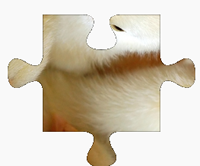DLTK's Nursery Rhymes for Kids
Jack and Jill
Jack and Jill went up the hill
To fetch a pail of water.
Jack fell
down and broke his crown
And Jill came tumbling after.
Jack and Jill Lyrics and Coloring Pages:
Jack and Jill Crafts:
Jack and Jill Printable Resources:
Jack and Jill Puzzle Worksheets:
On-Line Jigsaw Puzzles:
The History of "Jack and Jill"
"Jack and Jill" is a classic nursery rhyme that has been recited by children for generations. The rhyme tells the story of Jack and Jill, who go up a hill to fetch a pail of water. Jack falls down and breaks his crown, and Jill comes tumbling after.
Origins and Early History
The origins of "Jack and Jill" are somewhat obscure, but the rhyme is believed to date back to the 18th century. The earliest recorded version of the rhyme appeared in a reprint of John Newbery's "Mother Goose's Melody" around 1765. However, some versions of the rhyme date back even earlier.
Interpretations and Theories
There are several theories about the origins and meanings of "Jack and Jill":
- Historical References: One theory suggests that the rhyme refers to the 17th-century beheading of King Louis XVI ("Jack") and Queen Marie Antoinette ("Jill") during the French Revolution. This theory, however, lacks substantial evidence.
- Scandinavian Mythology: Another theory links the rhyme to Norse mythology, where the names Hjuki and Bil (similar to Jack and Jill) are mentioned. These characters were taken up by the moon while fetching water from a well.
- Local History: Some believe the rhyme has more local origins, possibly related to actual events in England. For example, the town of Kilmersdon in Somerset claims the rhyme is based on a local couple who went up a hill to fetch water and met with an accident.
- Moral Lesson: Like many nursery rhymes, "Jack and Jill" may simply have been intended as a cautionary tale for children, warning them of the dangers of climbing hills or engaging in other potentially risky activities.
Cultural Impact
- Literature and Media: The rhyme has inspired numerous adaptations and references in literature, cartoons, movies, and television shows. It has appeared in various forms, from straightforward retellings to parodies and reinterpretations. For instance, the rhyme is featured in Mother Goose collections and has been referenced in works like Roald Dahl's "Revolting Rhymes."
- Education: The rhyme is frequently used in early childhood education to teach rhythm, rhyme, and basic narrative structure. Its simple and repetitive structure makes it an effective tool for language development and memorization in young children. Teachers often use it as part of storytelling and music activities, helping children develop their auditory and verbal skills.
- Music and Performing Arts: The rhyme has been set to music and incorporated into children's performances and plays. Its catchy and familiar verse makes it a popular choice for musical adaptations and theatrical presentations aimed at young audiences.












